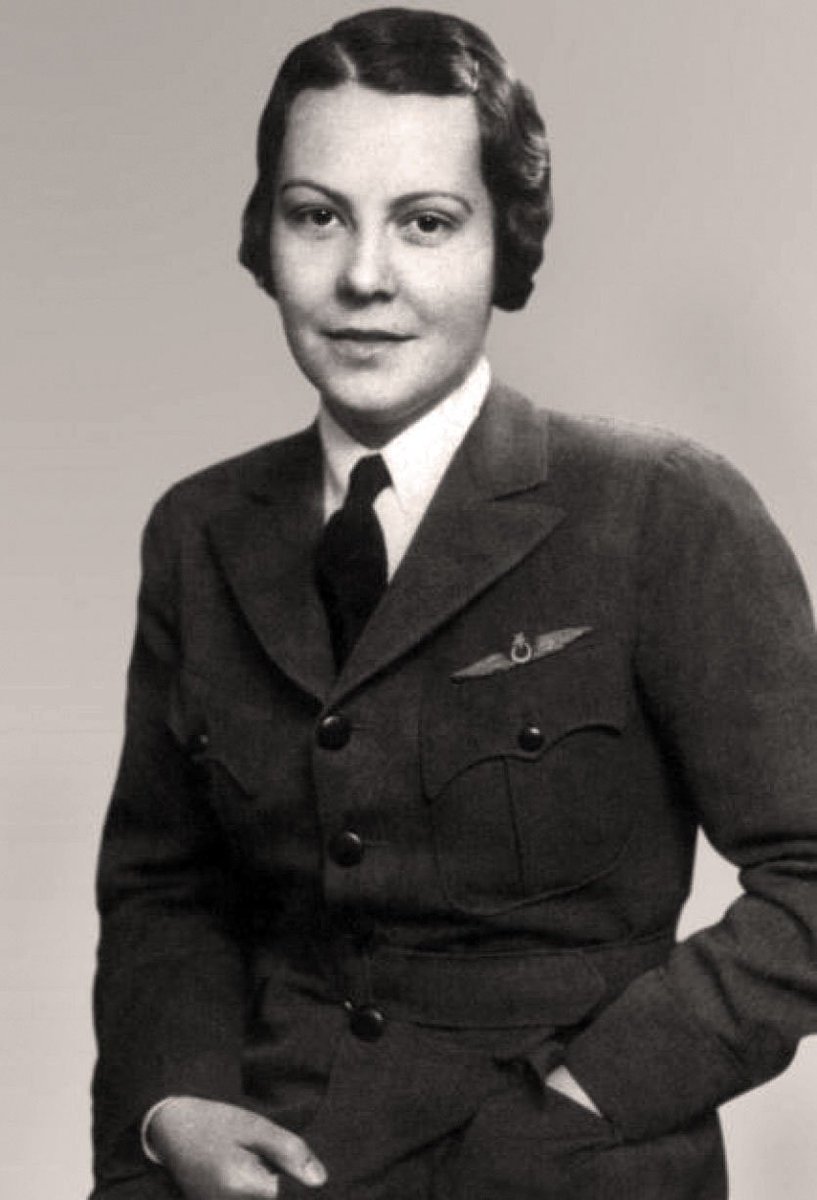Sabiha Gökçen (22 March 1913 – 22 March 2001) was a Turkish aviator.
She was the world's first female fighter pilot, aged 23. Others such
as Marie Marvingt and Evgeniya Shakhovskaya preceded her as military
pilots in other roles, but not as fighter pilots and without military
academy enrollment. She was an orphan, and one of the thirteen
adopted children of Mustafa Kemal Atatürk. She is recognized as the
first female combat pilot by The Guinness Book of World Records and
was selected as the only female pilot for the poster of "The 20
Greatest Aviators in History" published by the United States Air
Force in 1996.
Atatürk attached great importance to aviation and for that purpose
oversaw the foundation of the Turkish Aeronautical Association in
1925. He took Sabiha along with him to the opening ceremony of
Türkkuşu (Turkishbird) Flight School on 5 May 1935. During the
airshow of gliders and parachutists invited from foreign countries,
she got very excited. As Atatürk asked her whether she would also
want to become a skydiver, she nodded "yes indeed, I am ready right
now". Atatürk instructed Fuat Bulca, the head of the school, to
enroll her as the first female trainee. She was meant to become a
skydiver, but she was much more interested in flying, so she earned
her pilot's licence. Gökçen was sent to Russia, together with seven
male students, for an advanced course in glider and powered aircraft
piloting. However, when she was in Moscow, she learned the news that
her sister Zehra had died, and with collapsed morale, she immediately
returned to Turkey, isolating herself from social activities for some
time.
As girls were not being accepted by the Turkish War Academies in
those years, Sabiha Gökçen was provided, on Atatürk's orders, with
a personalized uniform, and attended a special education programme
of eleven months at the Tayyare Mektebi (Aviation School) in Eskişehir
in the academic year 1936-1937. After receiving her flight patents (diploma)
she trained to become a war pilot at the 1st Airplane Regiment in
Eskişehir for six months.
She improved her skills by flying bomber and fighter planes at the
1st Aircraft Regiment in Eskişehir Airbase and gained experience
after participating in the Aegean and Thrace exercises in 1937. In
that same year, she took part in military operations at the Dersim
rebellion and became the first Turkish female air force combat pilot.
A report of the General Staff mentioned the "serious damage" that
had been caused by her 50 kg bomb to a group of fifty fleeing
"bandits" and she was awarded with a takdirname
(letter of appreciation). She was also awarded the Turkish
Aeronautical Association's first "Murassa (Jeweled) Medal" for her
superior performance in this operation.
In 1938, she carried out a five-day flight around the Balkan
countries to great acclaim. In the same year, she was appointed
"chief trainer" of the Türkkuşu Flight School of the Turkish
Aeronautical Association, where she served until 1954 as a flight
instructor and became a member of the association's executive board.
She trained four female aviators, Edibe Subaşı, Yıldız Uçman,
Sahavet Karapas and Nezihe Viranyalı. Sabiha Gökçen flew around the
world for a period of 28 years until 1964. Her book entitled "A Life
Along the Path of Atatürk" was published in 1981 by the Turkish
Aeronautical Association to commemorate Atatürk's 100th birthday.
Throughout her career in the Turkish Air Force, Gökçen flew 22
different types of aircraft for more than 8,000 hours, 32 hours of
which were active combat and bombardment missions.
"Here's to strong women. May we know them. May we be them. May we raise them."
— Unknown

